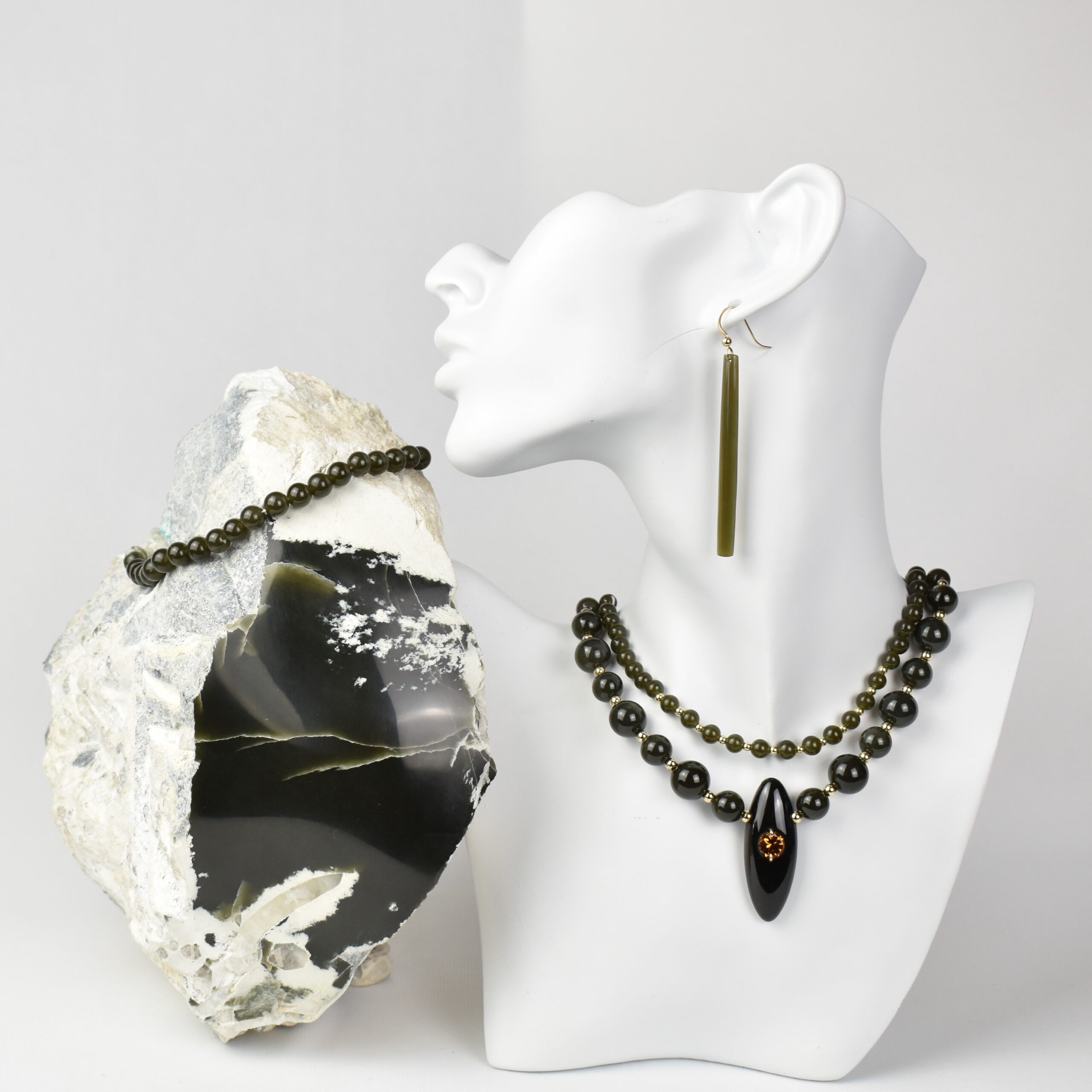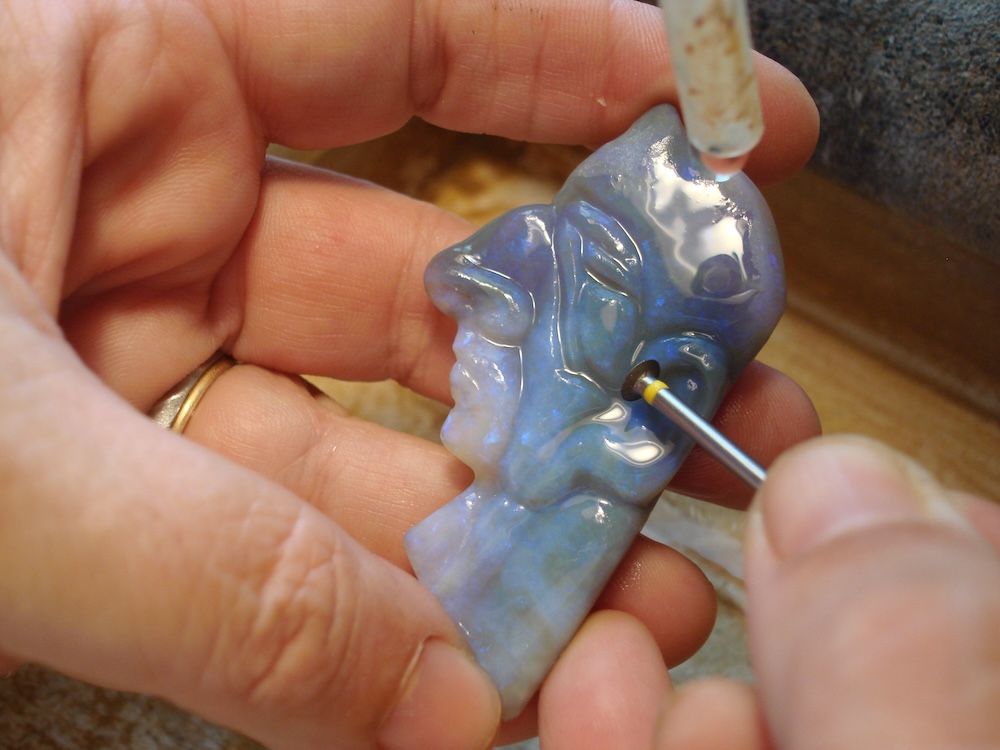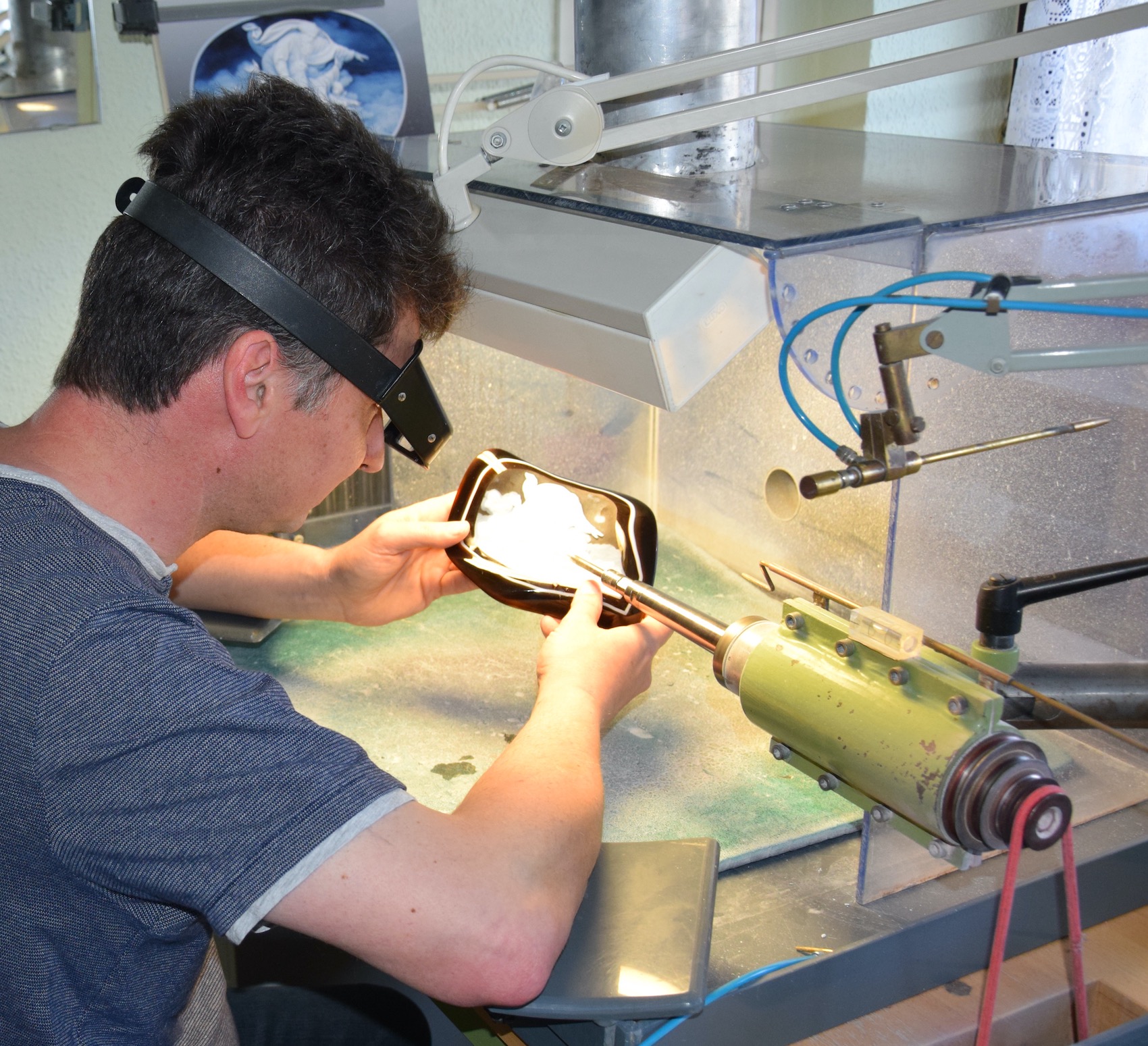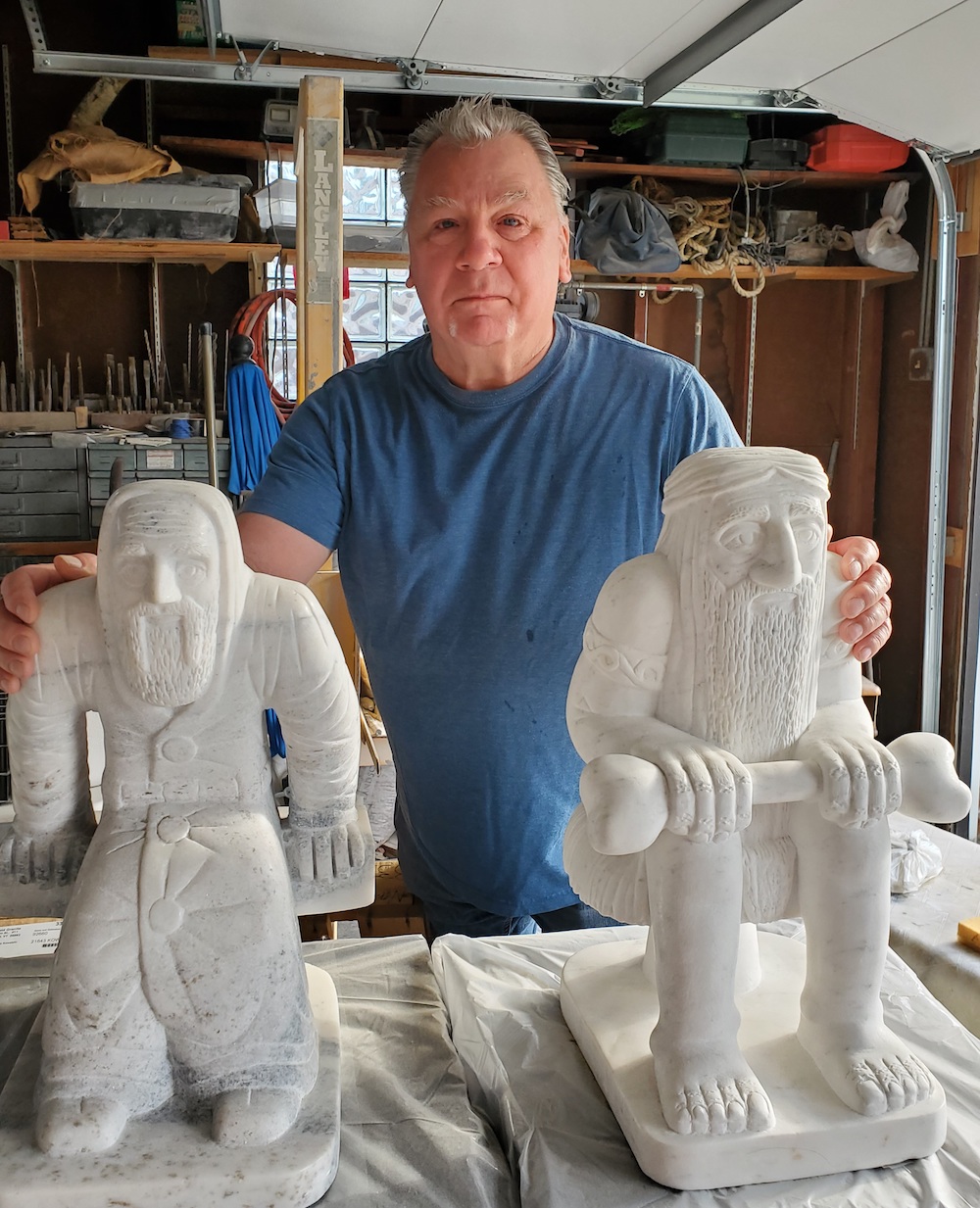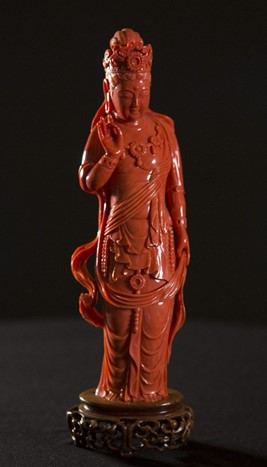
H: 11.75 in.; W: 3.37 in.
Carved in China
As the most widely worshiped bodhisattva, Guanyin is the Chinese form of Avalokitesvara, the Bodhisattva of Compassion in Buddhism originating in India around the 6th century BCE. Guanyin means “Perceiver of the World’s Sounds” in Chinese. It is believed that she is capable of not only perceiving but also hearing sorrows of humanity. The worship of Guanyin in China began around the 5th to 6th centuries.
Since the 2nd century, Chinese Buddhism had absorbed indigenous beliefs and incorporated a wide range of Chinese imagery into its art. One example is the transformation of Avalokitesvara from a foreign, male bodhisattva into a female deity featured with pronounced Chinese characteristics.
This coral carving of Guanyin is rendered as a slender and graceful lady. Standing elegantly, she grasps the sash in her left hand and raises her right hand in Karana mudra, a hand gesture performed by touching the tips of the thumb and the middle finger. This gesture signifies the warding off evil and removing sickness. Guanyin is featured with princely garments and jewelry adornments, an indication of the bodhisattva’s continued presence in the secular world to help others reach enlightenment.
Her eyes are contemplatively downcast, giving her face a pensive expression. Her hair is pulled in a high chignon. The rippling garments and downward flowing sash convey a powerful sense of movement.

